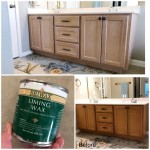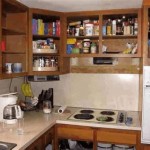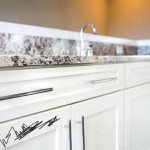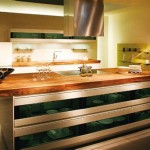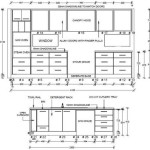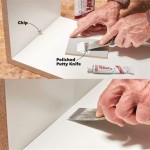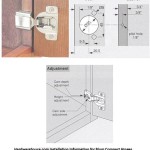Hydraulic Hinges For Kitchen Cabinets
Hydraulic hinges have become a popular choice for kitchen cabinets, offering a blend of functionality and sophisticated design. These hinges utilize hydraulic fluid to control the closing motion of cabinet doors, providing soft-close functionality and eliminating slamming. This article examines the benefits, types, installation process, and maintenance of hydraulic hinges for kitchen cabinets.
Benefits of Using Hydraulic Hinges
The integration of hydraulic hinges elevates the overall user experience of kitchen cabinets. The soft-close mechanism prevents damage to cabinet doors and frames caused by forceful closing. This gentle closing action also reduces noise levels in the kitchen, creating a quieter and more peaceful environment. Furthermore, hydraulic hinges contribute to a more premium feel, enhancing the perceived quality of the cabinetry.
Beyond the functional advantages, hydraulic hinges offer improved safety, especially for households with children. The controlled closing action minimizes the risk of fingers getting pinched or trapped. This safety feature provides peace of mind and a more secure kitchen environment. The consistent and predictable closing action ensures that cabinet doors are always fully closed, maintaining a tidy and organized kitchen appearance.
Types of Hydraulic Hinges
Hydraulic hinges are available in various configurations to accommodate different cabinet styles and door overlay types. Understanding these variations is crucial for selecting the appropriate hinge for a specific application.
Full Overlay Hinges: These hinges are designed for doors that completely cover the cabinet frame. They are commonly used in frameless cabinets or where a seamless, modern look is desired.
Half Overlay Hinges: Half overlay hinges are suitable for doors that cover half of the cabinet frame. This style is often used in traditional or transitional kitchen designs where a portion of the frame remains visible.
Inset Hinges: Inset hinges are designed for doors that sit flush with the cabinet frame. This style is typical in more traditional kitchen designs and requires precise installation for proper alignment.
In addition to overlay types, hydraulic hinges are available with different features, such as adjustable closing speed and integrated soft-close mechanisms. Some hinges also offer 3-way adjustability, allowing for fine-tuning of the door position in three dimensions: vertical, horizontal, and depth. This adjustability simplifies the installation process and ensures perfect alignment.
Installation of Hydraulic Hinges
While professional installation is recommended, homeowners with basic DIY skills can install hydraulic hinges. Accurate measurements and careful attention to detail are essential for proper function and alignment.
The installation process typically involves the following steps:
- Positioning the Hinge Plates: Accurately mark the locations for the mounting plates on both the door and the cabinet frame. Precision is critical for proper alignment.
- Drilling Pilot Holes: Drill pilot holes at the marked locations, ensuring the correct drill bit size is used to prevent damage to the wood.
- Securing the Hinge Plates: Screw the hinge plates securely into place, ensuring they are flush with the surface.
- Attaching the Door: Carefully align the hinge arms and attach the door to the cabinet frame.
- Adjusting the Hinge: Use the adjustment screws to fine-tune the door position and ensure proper alignment and closing action.
Maintenance and Troubleshooting
Hydraulic hinges require minimal maintenance to ensure long-lasting performance. Periodically check the screws to ensure they are tight and the hinges are securely attached. If the soft-close mechanism becomes less effective, it may indicate a need for adjustment or lubrication.
Common troubleshooting issues include misalignment, sticking, and noisy operation. Misalignment can often be corrected by adjusting the hinge screws. Sticking can be caused by debris or loose screws. Noisy operation may indicate a need for lubrication or a worn-out hinge mechanism. Addressing these issues promptly can prevent further damage and maintain the functionality of the hinges.
Choosing the correct hydraulic hinge for your kitchen cabinets involves considering factors such as overlay type, desired features, and installation complexity. Understanding the different types and their specific applications is essential for achieving optimal performance and a satisfying user experience. With proper installation and maintenance, hydraulic hinges can provide years of smooth, quiet, and reliable operation, enhancing the functionality and aesthetic appeal of any kitchen.

Kitchen Cabinet Hydraulic Hinge

13 Hydraulic Hinges Ideas For Cabinets

13 Hydraulic Hinges Ideas For Cabinets

2pcs Sliding Door Accessory Random Stop Hydraulic Hinges Kitchen Cabinet Adjustable Polish Hinge Stay Support Fruugo No

Makvin Stainless Steel Hydraulic Kitchen Cabinet Hinges Polished

Furniture Accessories Steel Hardware Fittings Iron Soft Close Kitchen Metal Cupboard Door Closing Buffering Cabinet Hydraulic Concealed Hinge China Made In Com

Huidao 1 Pair Hydraulic Gas Strut Lift Support Door Cabinet Hinge Spring Soft Close Lid Buffer Telescopic Rod For Furniture Cupboard Hinges Cabinets Hardware

Furniture Spring Cabinet Kitchen Hinges Soft Closing Door 3d Hydraulic Hinge With Hook Plate Dubai Type China 2d Made In Com

Safety Door Hydraulic Hinge Soft Close Full Overlay Kitchen Cabinet Cupboard Upgrade Your Cabinets Temu

Naierdi Hydraulic Hinges Kitchen Cabinet Door Adjustable Hinge Furniture Lift Up Support Hardware Joom
Related Posts

